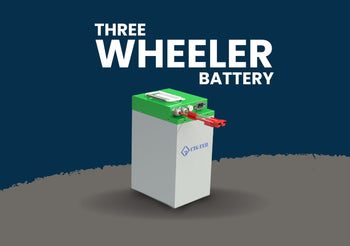Various governments in emerging economies have already indicated that they will incentivize a shift to electric vehicles. If we talk about India, the Modi government has set an ambition to go 100% electric by 2030.
E-vehicles gaining momentum in India
The electric vehicles in India appear to be gaining traction because Tesla, the global head of EVs, has announced plans to start its operations in India. Many companies in India have already started manufacturing electric scooters. The states of India which are aggressively participating in the research and development of e-vehicles are Uttar Pradesh, Madhya Pradesh, and Gujarat. The research in India has started to decrease the dependence of Lithium-Ion batteries on China.
Why electric vehicles are a boon for India?
The debate on the grounds of whether e-vehicles are good or bad for India doesn’t need many convincing factors.
Facts
- Out of the 10 most polluted cities in the world, India has 6 cities. The biggest reason for this increase in pollution is fossil fuels. Almost all the vehicles in India, ranging from two-wheelers, four-wheelers, and even trains in some areas run on fossil fuels.
- India’s Oil Import-India’s total dependence on crude oil imports is 86%, which means only 14% of the nation’s energy requirements are met by the nation; the rest is imported. Nevertheless, these imports require US Dollars, which also leads to a decrement in the Indian Forex Reserve.
- Global Climate Change, Heat Emission, Paris Climate Accord and the influence of advanced Artificial Technology on Self-Driving Cars. The next revolution in the world of mobility is undoubtedly e-vehicles.
All these points justify the switch from fossil fuels to e-vehicles. All the developed nations are already making a shift to e-vehicles.
Major bottlenecks to adhere to
When we talk about e-vehicles, we have to be very certain about the source of electricity. If we are shifting to electric vehicles but producing electricity from coal, the issue of pollution will remain. Hence, the right way to go about it would be the electricity produced by renewable energy, and, simultaneously, electric vehicles should also use the same source of renewable electricity.
Challenges for the transition to Electric Vehicles
If we aim to shift towards EVs by 2030, as promised by the Modi government, the following challenges need to address.
Infrastructure for charging e-vehicles
In the current scenario, if a person has to go a long distance because he has a low charge in his e-vehicle. The options for him to recharge are very minuscule. In India, we have 70,000 filling stations in about 718 districts. Within every 5-6 km, a filling station can be easily located. On the other hand, there are only 300 charging stations for EVs. In such a scenario, a person with an electric vehicle will face a troublesome journey. To conquer this problem, the government is taking steps, but the pace is comparatively slow.
Higher Cost
If a person wants to buy a medium car in India, let’s assume a Maruti Suzuki Swift. The on-road price of the vehicle in the petrol variant is 6-7Lakhs. On the other hand, the electric car offered by Tesla starts at 60 lakhs in India. India is a price-sensitive market and a shift to e-vehicles will only be sustainable if it is affordable.
Lack of Technology
India has a huge technology problem. If we talk about a general Maruti Suzuki Swift Petrol car, it has a fuel tank capacity of 40 liters. If the mileage is 15 km per liter, the car can go up to 600 km. Similarly, in terms of technology, if we talk about a completely charged vehicle, will it cover the same distance? In India, we have a popular EV company named Ather. On a complete charge, it can go up to 120 km on Indian roads as quoted by the company.
Import of EV components & materials
Due to a lack of technology, India has to import most of the e-vehicle materials. The battery component in an EV is very crucial. Currently, all the batteries run on Lithium-Ion Technology. Again, the reserve of lithium in India is questionable. Therefore, for most of the battery and EV electronic components, India has to import them from China, which has led to its strategic dependence on China
Lack of a Skilled Workforce
India has a problem with a skilled workforce in terms of electric vehicles. The technology is new and renowned educational institutions aren’t able to adapt considering the changing EV technology of the world.
Possible Disruption in the Automobile Sector
The biggest problem that the automobile sector will face would be the possible disruption of the market. Since many automobile companies like Kia, MG Morris Garages, Jeep, etc. have recently entered India and have invested heavily, electric vehicles would lead to a complete disruption in the Indian automobile market. We need a slow and steady transition to electric vehicles so that existing automobile companies will also be able to transition to EVs.



















1 comment
An EV charging system is feasible on micro grid or a separate power system. 33KV/11KV transmission of the state ( Discom)is not stable due to variable solar generation. The hybrid system is suitable.